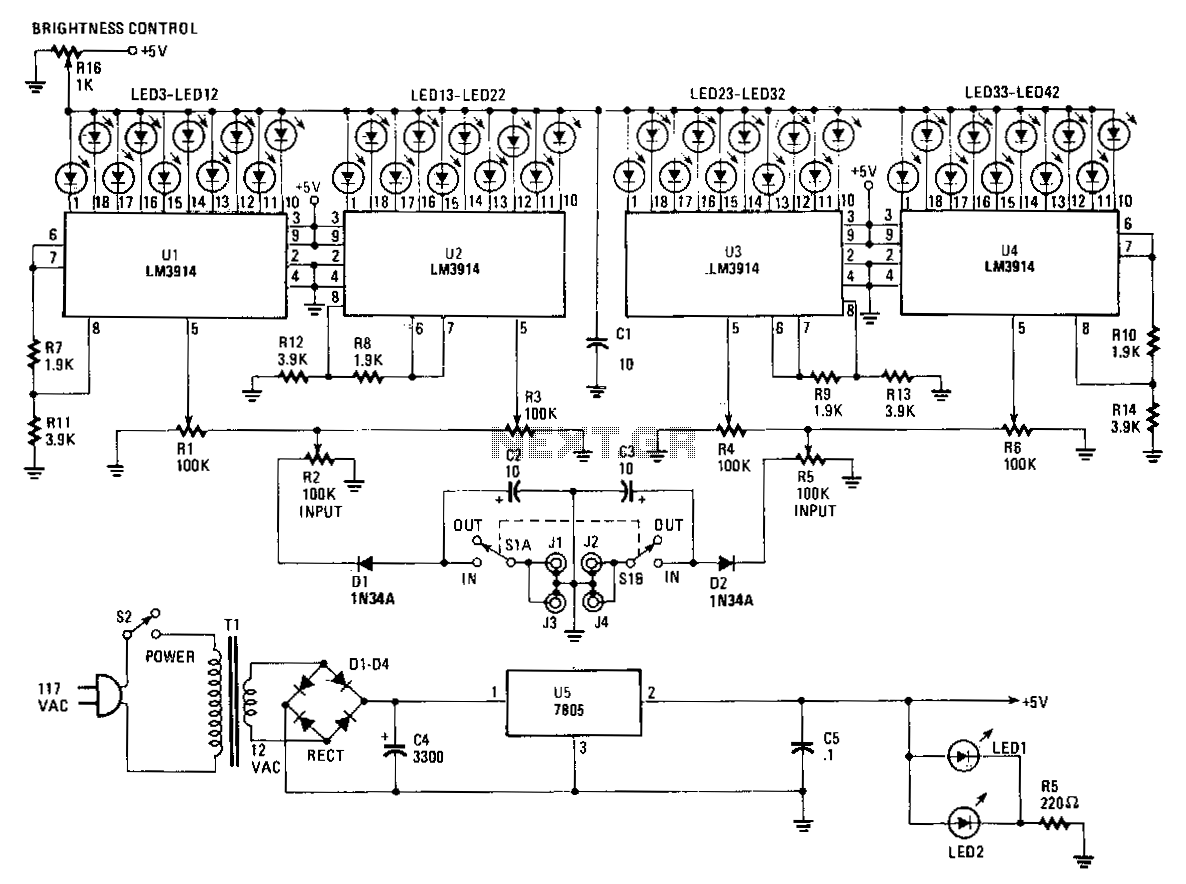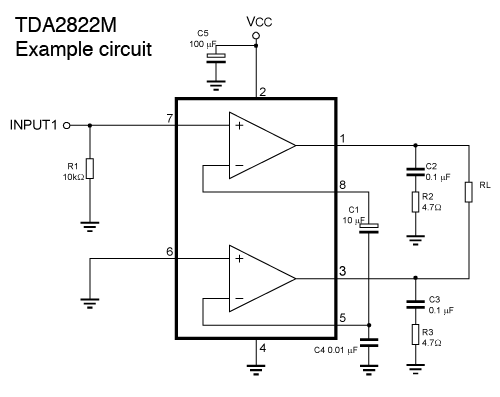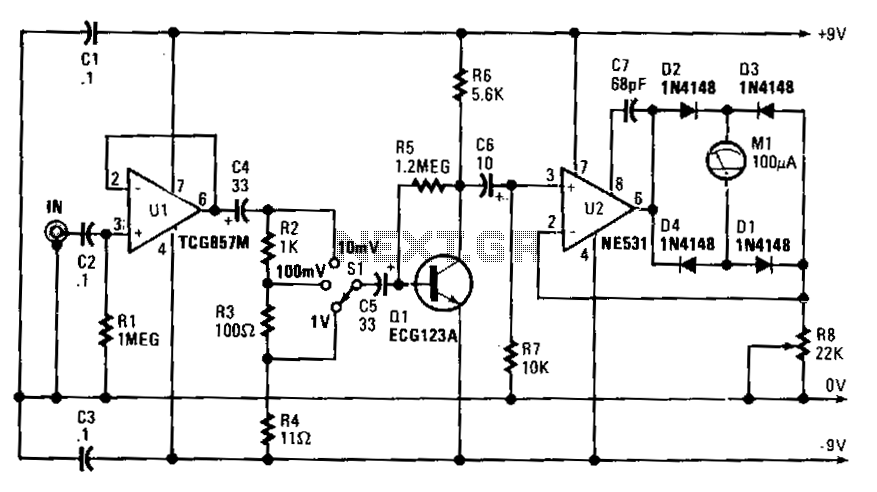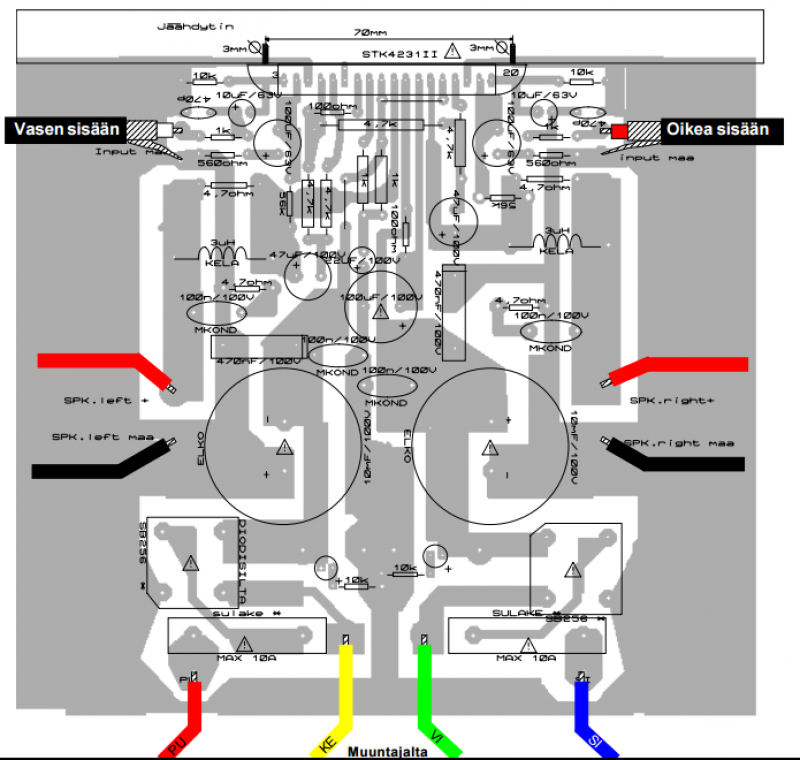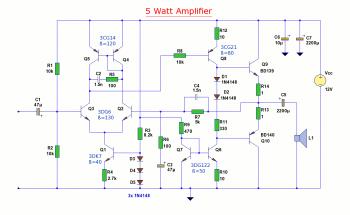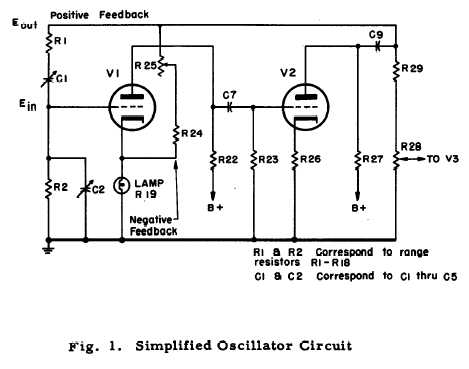
Audio Level Meter (VU Meter)
.gif)
This circuit utilizes a single integrated circuit (IC) along with a minimal number of external components to display audio levels through ten LEDs. The input voltage range is from 12V to 20V, with a recommendation for 12V. The LM3915 is a monolithic integrated circuit designed to sense analog voltage levels and drive ten LEDs, providing a logarithmic display with a 3 dB per step. The LED current drive is regulated and programmable, which negates the need for current limiting resistors. The IC features an adjustable voltage reference and a precise ten-step voltage divider. It includes a high-impedance input buffer capable of accepting signals from ground up to within 1.5V of the positive supply, and it requires no protection against input voltages of ±35V. The input buffer drives ten individual comparators that are referenced to the precision divider, with accuracy typically better than 1 dB.
The circuit can be implemented in various applications where audio level monitoring is essential. The LM3915 operates in two modes: bar graph and dot display, allowing for flexibility in visual representation. The use of programmable LED current drive enhances the circuit's adaptability to different LED types and brightness levels, providing designers with the ability to customize the display according to specific requirements.
The adjustable voltage reference allows for calibration of the input range, ensuring that the circuit can accommodate various audio signal levels accurately. The ten-step voltage divider is crucial for translating the analog input into a corresponding LED output, enabling a clear visual indication of the audio level. The high-impedance input buffer ensures that the circuit does not load the audio source, maintaining signal integrity even at lower levels.
The robustness of the LM3915 allows it to handle significant input voltage variations without damage, making it suitable for environments where signal levels can fluctuate dramatically. The overall design simplicity, combined with the precision and reliability of the LM3915, makes this circuit an excellent choice for audio level monitoring in professional audio equipment, consumer electronics, and DIY audio projects.This circuit uses just one IC and a very few number of external components. It displays the audio level in terms of 10 LEDs. The input voltage can vary from 12V to 20V, but suggested voltage is 12V. The LM3915 is a monolithic integrated circuit that senses analog voltage levels and drives ten LEDs providing a logarithmic 3 dB/step analog display. LED current drive is regulated and programmable, eliminating the need for current limiting resistors. The IC contains an adjustable voltage reference and an accurate ten-step voltage divider. The high-impedance input buffer accepts signals down to ground and up to within 1. 5V of the positive supply. Further, it needs no protection against inputs of ±35V. The input buffer drives 10 individual comparators referenced to the precision divider. Accuracy is typically better than 1 dB. 🔗 External reference
The circuit can be implemented in various applications where audio level monitoring is essential. The LM3915 operates in two modes: bar graph and dot display, allowing for flexibility in visual representation. The use of programmable LED current drive enhances the circuit's adaptability to different LED types and brightness levels, providing designers with the ability to customize the display according to specific requirements.
The adjustable voltage reference allows for calibration of the input range, ensuring that the circuit can accommodate various audio signal levels accurately. The ten-step voltage divider is crucial for translating the analog input into a corresponding LED output, enabling a clear visual indication of the audio level. The high-impedance input buffer ensures that the circuit does not load the audio source, maintaining signal integrity even at lower levels.
The robustness of the LM3915 allows it to handle significant input voltage variations without damage, making it suitable for environments where signal levels can fluctuate dramatically. The overall design simplicity, combined with the precision and reliability of the LM3915, makes this circuit an excellent choice for audio level monitoring in professional audio equipment, consumer electronics, and DIY audio projects.This circuit uses just one IC and a very few number of external components. It displays the audio level in terms of 10 LEDs. The input voltage can vary from 12V to 20V, but suggested voltage is 12V. The LM3915 is a monolithic integrated circuit that senses analog voltage levels and drives ten LEDs providing a logarithmic 3 dB/step analog display. LED current drive is regulated and programmable, eliminating the need for current limiting resistors. The IC contains an adjustable voltage reference and an accurate ten-step voltage divider. The high-impedance input buffer accepts signals down to ground and up to within 1. 5V of the positive supply. Further, it needs no protection against inputs of ±35V. The input buffer drives 10 individual comparators referenced to the precision divider. Accuracy is typically better than 1 dB. 🔗 External reference
